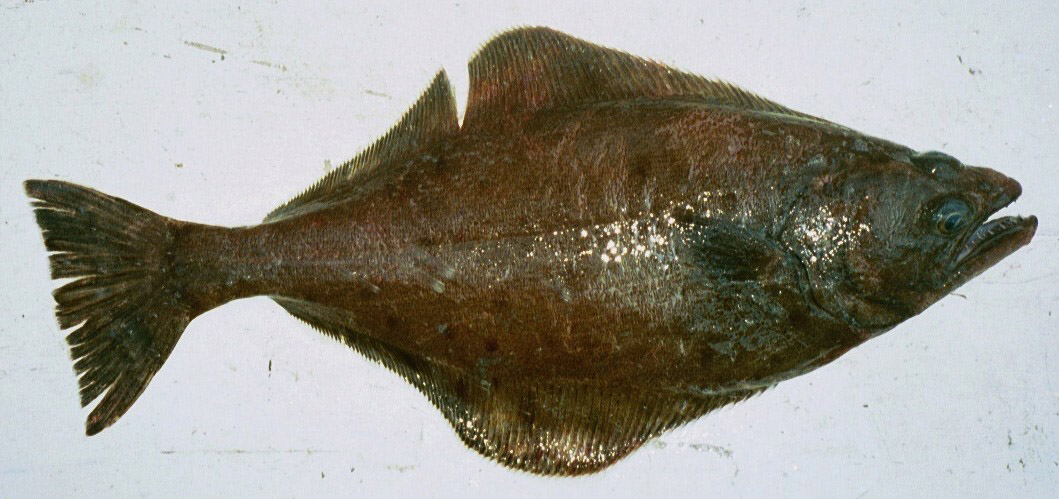Research Projects
Atlantis and Integrated Ecosystem Assessments
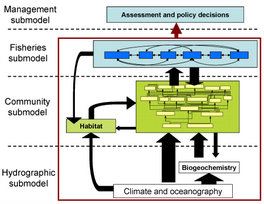
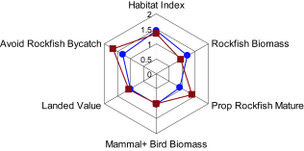
The Atlantis ecosystem modeling platform has been developed by Dr. Beth Fulton and collaborators at CSIRO Australia. Atlantis is a spatially explicit simulation model that includes ecology, oceanography, and fisheries. We are applying Atlantis as a strategic tool for ecosystem based management in the California Current and the Gulf of California. The work has been supported by both NOAA and the Gordon and Betty Moore Foundation. Our models for the California Current are available here:
Kaplan, I.C., and P.S. Levin. 2009. Ecosystem based management of what? An emerging approach for balancing conflicting objectives in marine resource management. In R.J. Beamish and B.J. Rothschild, eds. The Future of Fisheries In North America. Springer, NY 736 pages.
Horne et al. (2010) California Current Atlantis Model
Brand et al. (2007) California Current Atlantis Model
Dufault et al. (2009) Supporting research related to fish, marine mammal, and bird diets in the California Current
Several applications of Atlantis are described below, and in a recent review article (Fulton et al. 2011). Much of my current work related to identifying ecosystem indicators and testing policy scenarios is a part of NOAA's Integrated Ecosystem Assessments, as described in Levin et al. (2009) and shown in the figure below:
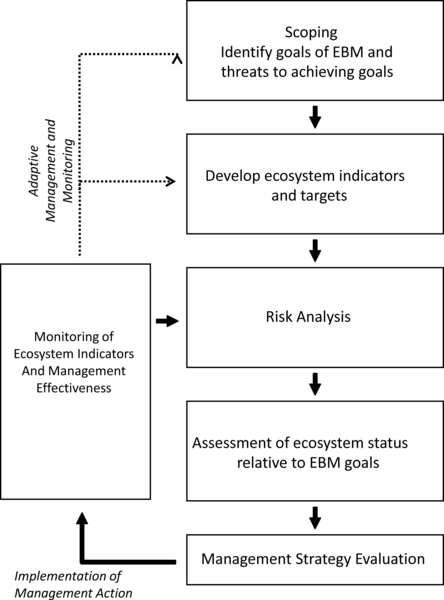
Ocean Acidification and Food Webs
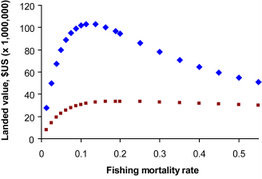
Catch shares, or individual fishing quotas (IFQs), are a promising fisheries management method that allocates individual fishers a set portion of the total catch, and may reduce overcapitalization and promote sustainable fishing practices. Any management scheme, including catch shares, should be robust to potential shifts in the biophysical system. In this work we coupled possible catch scenarios under an IFQ scheme with ocean acidification impacts on shelled benthos and plankton, using an Atlantis ecosystem model for the US West Coast.
IFQ harvest scenarios alone in most cases did not have strong impacts on the food web, beyond the direct effects on harvested species. However, when we added impacts of ocean acidification, the abundance of commercially important groundfish such as English sole (Pleuronectes vetulus), arrowtooth flounder (Atheresthes stomias), and yellowtail rockfish (Sebastes flavidus) declined up to 20-80% due to the loss of shelled prey items from their diet. English sole exhibited a tenfold decline in potential catch and economic yield when confronted with strong acidification impacts on shelled benthos. Therefore, it seems prudent to complement catch shares with careful consideration of potential climate change effects such as acidification. Our analysis provides an example of how new ecosystem modeling tools that evaluate cumulative impacts can be integrated with established management reference points and decision mechanisms.
Published:
Kaplan, I.C., M. Burden, P.S. Levin, and E.A. Fulton. 2010. Fishing Catch Shares in the Face of Global Change: A Framework for Integrating Cumulative Impacts and Single Species Management. Canadian Journal of Fisheries and Aquatic Sciences 67: 1968-1982.
Fishing Fleet Dynamics and Catch Shares (ITQs)
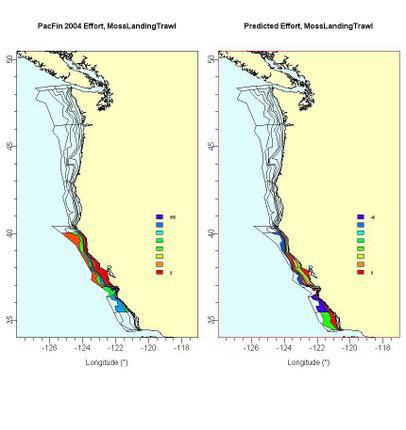
This project provides West Coast fisheries managers with a tool to test the efficiency and robustness of alternative fishery management strategies in a holistic ecosystem framework. We augment a well developed ecological simulator (Atlantis) of the US West Coast marine ecosystem with fleet dynamic models that are consistent with the economic incentives created by the current and anticipated fishery management system for the West Coast groundfish fishery. The simulation model is used to evaluate alternative policies for setting total allowable catch (TACs) under different management systems including cumulative catch limits (i.e., status quo strategy), and a variety of individual transferable quotas options (ITQs). These ITQ options include alternative schemes for leasing quota, and penalties for quota overages. The model, which is spatially explicit, allows us tofor evaluate evaluation of the effects of area closures. In addition to providing insights into how alternative fishery management policies will affect the profitability and sustainability of primary fisheries, the model illustrates the wider ecosystem impacts of fishery management policies.
Ecosystem Modeling for Artisanal Fisheries in the Gulf of California
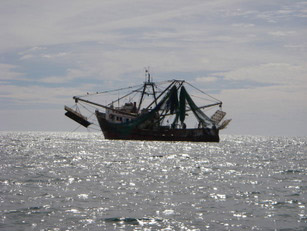
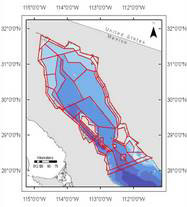
With modeling by Dr. Cameron Ainsworth and policy application by Dr. Hem Nalini Morzaria Luna, we have developed an Atlantis ecosystem model for strategic management simulations in the Northern Gulf of California, Mexico. We developed the model in collaboration with the PANGAS research consortium, with support from the David and Lucille Packard Foundation.
Published products to date include:
Ainsworth, C., Morzaria-Luna, H., Kaplan, I.C., Levin, P.S., Fulton, E. 2012. Full compliance with harvest regulations yields economic and ecological benefits: Northern Gulf of California case study. Journal of Applied Ecology 49(1) 63-72.
Download PDF - Diet compositions of fish species in the Northern Gulf of California (English) View
Descargar PDF - Composición de las dietas de peces en el Golfo Norte de California (Espanol) View
Ainsworth et al. (2011) Gulf of California Atlantis Model. NOAA Technical Memorandum NMFS-NWFSC-110
Stock Assessment
Kaplan and Helser (2007) Stock Assessment for Arrowtooth Flounder
